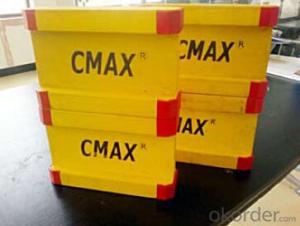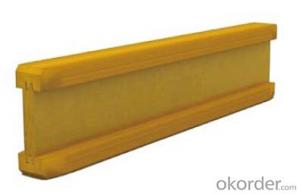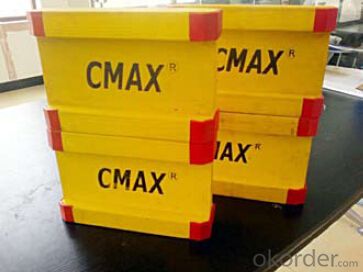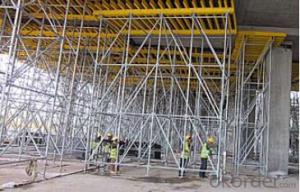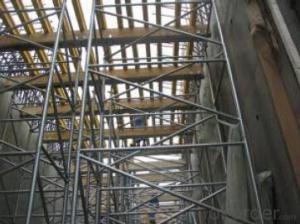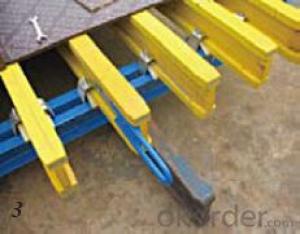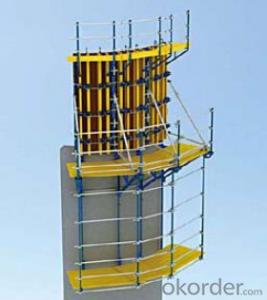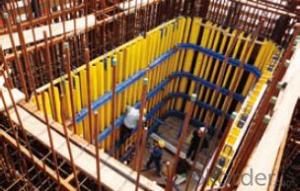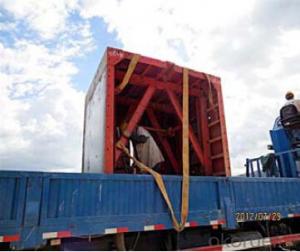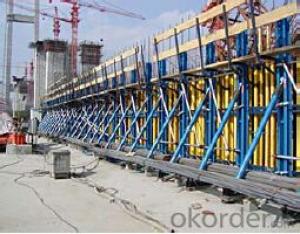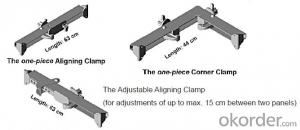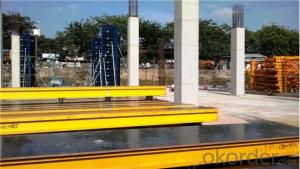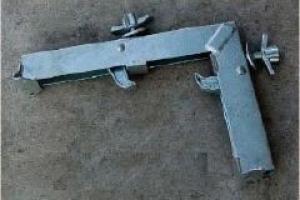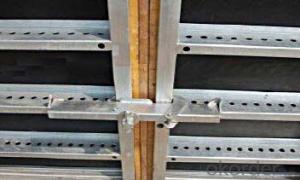Timber-beam for formwork and scaffolding system
- Loading Port:
- Tianjin
- Payment Terms:
- TT OR LC
- Min Order Qty:
- 50 m²
- Supply Capability:
- 1000 m²/month
OKorder Service Pledge
OKorder Financial Service
You Might Also Like
Characteristics:
◆ Standardized production lines.
Supply capability: 3000m/day, Lmax = 6600mm.
◆ Finger jointing of the flange and web, the strength of timber beam is highly improved.
Max. shearing force failure load:40KN
◆ Well treated to prevent from water penetration or erosion, so the service life maximally extended.
Normally, CNBM timber beam H20 can be used for 4 to 5 years, the exact using time would depend on maintenance & storage.
◆ Robust caps at the end of the girders protect against damages.

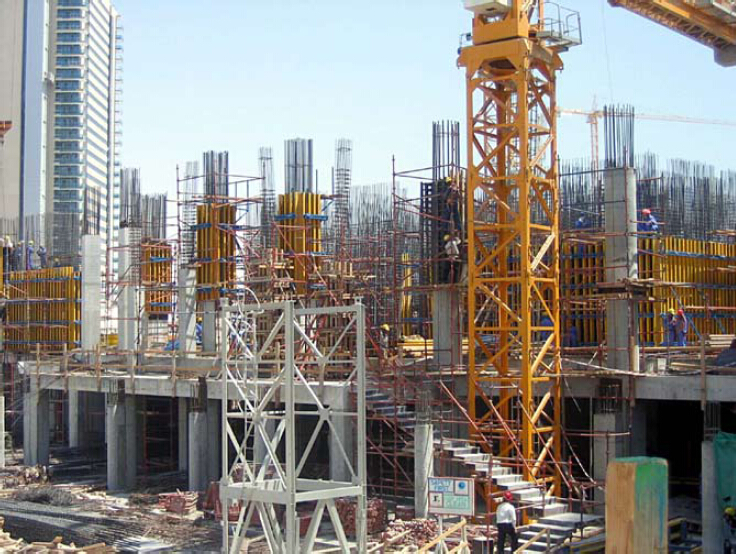
- Q: Can steel formwork be used for projects with stringent quality requirements?
- Yes, steel formwork can definitely be used for projects with stringent quality requirements. Steel formwork is known for its durability, strength, and consistency, making it an ideal choice for projects where precision, accuracy, and high-quality finishes are essential. Steel formwork is capable of withstanding heavy loads and can maintain its shape and dimensions over multiple uses, ensuring that the concrete structure is formed accurately and precisely according to the design specifications. Additionally, steel formwork provides a smooth surface finish, reducing the need for extensive post-construction finishing work. Its robustness and stability make it suitable for projects requiring stringent quality control, such as high-rise buildings, bridges, and infrastructure projects. Furthermore, steel formwork allows for easy customization, enabling contractors to meet specific project requirements efficiently. Overall, steel formwork is a reliable and efficient choice for projects with stringent quality requirements, ensuring that the final structure meets the highest standards of quality and durability.
- Q: Can steel formwork be used for curved or irregular shapes?
- Curved or irregular shapes can be achieved using steel formwork. Steel, a highly flexible material, can be easily manipulated into various sizes and shapes. Its strength and durability make it suitable for handling the pressure exerted by concrete during pouring and curing. To create curved or irregular shapes, steel formwork typically consists of modular panels that can be adjusted or bent to the desired shape. These panels can be easily connected together to form a continuous surface. Furthermore, steel formwork can be customized and welded to create intricate shapes that perfectly match the architectural design requirements. Steel formwork's versatility allows it to be used in a wide range of projects, such as buildings, bridges, tunnels, and dams. It provides a high-quality finish and can be reused multiple times, making it a cost-effective solution for projects that require repetitive shapes or structures with unique geometries. In summary, steel formwork is an excellent option for achieving curved or irregular shapes. Its flexibility, strength, and durability make it a reliable choice for construction projects that require complex and customized formwork solutions.
- Q: Can steel formwork be used for architectural concrete columns?
- Yes, steel formwork can be used for architectural concrete columns. Steel formwork is known for its strength and durability, making it a suitable choice for constructing concrete columns. It provides a rigid structure that can withstand the pressure exerted by the wet concrete during pouring and curing. Steel formwork also allows for precise shaping and detailing, enabling architects to create intricate designs and textures on the surface of the concrete columns. Additionally, steel formwork can be reused multiple times, making it a cost-effective option for projects that require multiple concrete columns. However, it is important to ensure that the steel formwork is properly coated or treated to prevent corrosion and ensure its longevity.
- Q: Are there any specific design considerations for steel formwork?
- Yes, there are specific design considerations for steel formwork. These include factors such as the strength and stability of the steel structure, the weight-bearing capacity of the formwork, ease of assembly and disassembly, compatibility with different concrete mixtures, and the ability to withstand various site conditions such as weather and construction loads. Additionally, the design should also consider the reusability and durability of the steel formwork system to ensure cost-effectiveness and sustainability in construction projects.
- Q: How does steel formwork contribute to sustainable construction practices?
- Steel formwork offers several advantages for sustainable construction practices in the following ways: 1. Longevity: The durability of steel formwork allows it to be reused multiple times, thereby reducing the frequency of replacements. This minimizes waste generation during construction and reduces the environmental impact associated with manufacturing new formwork materials. 2. Energy-consciousness: Steel formwork's high strength-to-weight ratio means that less material is required to achieve the same structural support compared to other formwork materials. This results in reduced energy consumption during the manufacturing and transportation of formwork components. 3. Waste minimization: Customizable steel formwork can be tailored to fit project requirements, resulting in minimal waste during construction. Furthermore, the modular design of steel formwork enables easy disassembly and reconfiguration, reducing construction waste and facilitating efficient recycling or reuse of materials. 4. Accelerated construction: Steel formwork systems are designed for swift assembly and disassembly, leading to faster construction times. This reduces project duration, minimizes disruption to the environment, and conserves resources. 5. Heightened safety: The strong and stable support structure provided by steel formwork lowers the risk of accidents or structural failures during construction. This creates a safer working environment for construction workers, promoting sustainable practices by improving worker welfare. 6. Recyclability: Steel is a highly recyclable construction material, and steel formwork can be easily recycled at the end of its useful life. This fosters a circular economy by reducing the demand for new steel production and minimizing the environmental impact associated with mining and extracting raw materials. In conclusion, the durability, energy efficiency, waste reduction, accelerated construction, enhanced safety, and recyclability of steel formwork make it an environmentally sustainable choice for construction practices. By incorporating steel formwork into construction projects, builders can contribute to sustainable development by reducing environmental impacts and promoting resource efficiency.
- Q: Is steel formwork suitable for all types of concrete structures?
- No, steel formwork may not be suitable for all types of concrete structures. While steel formwork is versatile and durable, it may not be cost-effective or practical for smaller projects or structures with complex designs. Additionally, certain conditions such as extreme temperatures, corrosive environments, or high-rise buildings may require alternative formwork systems. Therefore, the suitability of steel formwork depends on the specific project requirements and considerations.
- Q: What is the lifespan of steel formwork compared to other types of formwork?
- The lifespan of steel formwork is generally longer compared to other types of formwork. Steel is a highly durable material that can withstand frequent use and harsh construction conditions. It has excellent resistance to wear, corrosion, and impact, making it a preferred choice for long-term projects. Additionally, steel formwork can be easily repaired and reused, further extending its lifespan.
- Q: What type of finishes can be achieved with steel formwork?
- Steel formwork can achieve a variety of finishes, including smooth, textured, and patterned surfaces. Additionally, steel formwork allows for precise and intricate detailing, making it possible to achieve complex shapes and designs in concrete structures.
- Q: How does steel formwork compare to plastic formwork in terms of cost and durability?
- In terms of upfront cost, steel formwork is generally pricier than plastic formwork. The cost of steel formwork encompasses material, fabrication, and transportation expenses, which can be higher in comparison to plastic formwork. Conversely, plastic formwork is relatively more affordable due to its lower material and production costs. Nonetheless, when it comes to durability, steel formwork holds a significant advantage. Steel is renowned for its strength and endurance, enabling it to withstand substantial loads and repeated use over time. It is resistant to wear and tear, deformation, and damage caused by external factors such as weather conditions or mishandling. This durability ensures that steel formwork can be reused multiple times, resulting in long-term cost savings. On the other hand, plastic formwork, despite being cost-effective initially, may have limitations in terms of durability. Plastic is not as sturdy as steel and may be susceptible to deformation or cracking, especially under heavy loads or inadequate handling. Although plastic formwork can still be reused multiple times, it may require more frequent replacement or repair in comparison to steel formwork. To summarize, steel formwork may have a higher initial cost but offers superior durability and longevity. Plastic formwork, on the other hand, is cheaper but may not withstand heavy loads or repeated use as effectively as steel. The choice between the two depends on the specific requirements of the project, budget constraints, and the anticipated lifespan of the formwork.
- Q: What are the advantages of using steel formwork?
- There are several advantages of using steel formwork in construction projects. Firstly, steel formwork is highly durable and has a longer lifespan compared to other materials such as timber or plywood. This means that it can be reused multiple times, reducing the overall cost of construction. Additionally, steel formwork is resistant to warping, shrinking, or expanding due to changes in humidity or temperature, ensuring consistent and accurate results in the construction process. Secondly, steel formwork offers excellent strength and stability, making it ideal for constructing large or complex structures. Its rigidity minimizes the risk of deformations and ensures the structural integrity of the concrete during the pouring and curing process, resulting in a high-quality finish. Furthermore, steel formwork provides a smooth and consistent surface finish to the concrete. This is particularly advantageous for architectural projects where an aesthetic appearance is essential. The steel surface prevents leakage, minimizing the need for additional waterproofing measures and reducing the risk of defects or cracks in the concrete. Moreover, steel formwork is highly adaptable and can be easily customized to fit different shapes and sizes. This flexibility allows for the construction of unique and complex designs, providing architects and engineers with more freedom in their creative process. Lastly, steel formwork is time-efficient. Its modular nature and ease of assembly and dismantling enable faster construction cycles, reducing overall project timelines. The quick turnaround time translates into cost savings and increased productivity on the construction site. In conclusion, the advantages of using steel formwork include durability, strength, smooth surface finish, adaptability, and time-efficiency. These benefits make steel formwork a preferred choice in construction projects, improving construction quality, reducing costs, and enhancing overall efficiency.
Send your message to us
Timber-beam for formwork and scaffolding system
- Loading Port:
- Tianjin
- Payment Terms:
- TT OR LC
- Min Order Qty:
- 50 m²
- Supply Capability:
- 1000 m²/month
OKorder Service Pledge
OKorder Financial Service
Similar products
Hot products
Hot Searches
Related keywords
